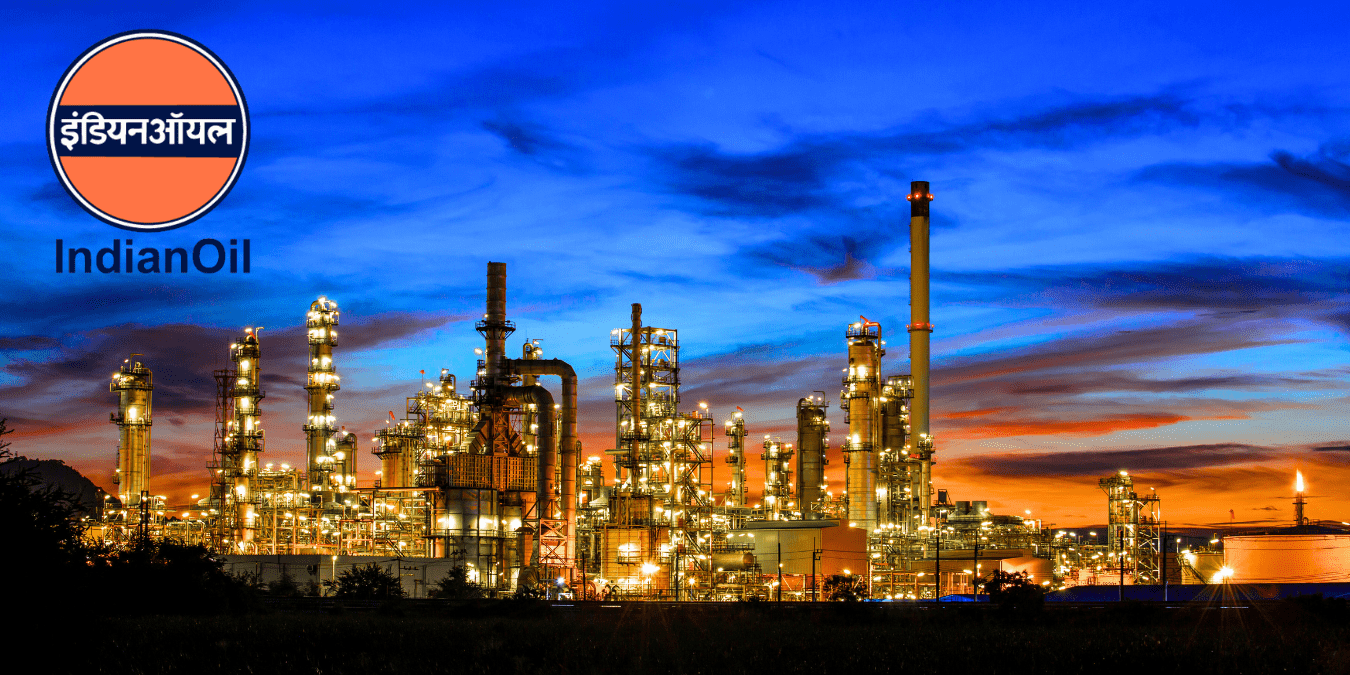
Why Indian Oil’s ₹7,610 Crore Q2 Profit in 2025 Isn’t Just About Oil Prices
Indian Oil’s profit jumped to ₹7,610 crore in Q2 despite weak fuel sales and heavy rain — but that’s not the real story. A hidden ₹14,000 crore twist, record refining margins, and secret cost moves are quietly rewriting India’s energy game. The surprise inside IOC’s results will shock you.
When rains flood cities but profits flood balance sheets, you know something unusual is happening.
Indian Oil Corporation (IOC), India’s energy powerhouse, has reported a sharp jump in Q2 FY25–26 profit after tax (PAT) to ₹7,610 crore, up from ₹5,689 crore in the previous quarter. Despite lower revenue due to an extended monsoon season, IOC’s strong refining performance and efficiency measures turned adversity into advantage.
This quarter could redefine how India’s biggest oil refiner is executing its shift from old energy to the new.
The Silent Profit Surge That Surprised Analysts
Indian Oil’s growth momentum is striking:
- Q2 PAT: ₹7,610 crore vs ₹5,689 crore in Q1 FY25–26
- H1 FY25–26 PAT: ₹13,299 crore vs ₹2,823 crore in H1 FY24–25
- Revenue: ₹2,02,992 crore, slightly down from Q1 due to rain-impacted sales.
While volume weakness hurt revenue, profitability jumped thanks to elevated refining margins and cost control. The corporation’s earnings revival reflects not just fuel sales—but operational smarts.
The ₹14,000 Crore Surprise Revenue That Changes Everything
Here’s what caught everyone’s attention: the government has approved ₹14,486 crore in LPG subsidy compensation for IOC. It will be disbursed in 12 monthly installments beginning November 2025 and booked as revenue.This hidden boost could become a steady profit cushion through FY26. For consumers, it secures affordability in LPG cylinders; for IOC, it means better income visibility amid regulatory unpredictability.
Analysts see it as one of the smartest fiscal anchors in IOC’s recent financial history.
Inside IOC’s Record Refining Margins
Refining is the beating heart of any oil business—and IOC’s Q2 numbers show why its performance matters.
- Refinery throughput: 17.6 MMT
- Utilization: 99.5 percent (practically full throttle)
- Reported GRM: $10.66/bbl
- Normalized GRM: $8.9/bbl
Margins at these levels are impressive by global standards. They’ve been driven by optimized crude sourcing, favorable product spreads, and better refinery yields.
This quarter proves that refining flexibility and smart feedstock planning can offset weather-driven sales dips.
Russian Crude Discounts: The Hidden Power Play
IOC continued to import roughly 18–19 percent of its crude from Russia, securing stable discounts of around $2–3 per barrel.In a volatile crude market, this strategic sourcing edge ensures that IOC’s refining margins remain powerful even when international spreads narrow.
In energy diplomacy terms, it’s a masterstroke—one that quietly strengthens India’s energy security while boosting profitability.
Project Sprint: Inside IOC’s Cost Revolution
If IOC’s profit story sounds sharper lately, thank Project Sprint.
This three-year transformation program aims to slash costs by 20 percent across refining, marketing, and logistics divisions. The company is using AI-driven supply planning, predictive maintenance, and logistics optimization to achieve real savings.
Early success indicators show efficiency gains that could permanently elevate profit levels, even during down-cycles.
Mega Refineries Coming Online: Panipat, Gujarat, Barauni
The powerhouse trio—Panipat, Gujarat, and Barauni refineries—is gearing up for commissioning in FY26. IOC expects initial utilization at around 60 percent for expanded capacities.These advances will expand throughput, enhance petrochemical output, and position IOC to meet both domestic demand and export opportunities in products like high-speed diesel and jet fuel.
It’s the kind of long-game investment that can transform balance sheets for a decade.
The Future-Ready CapEx Strategy
Indian Oil has earmarked a capital expenditure of ₹33,494 crore for FY25–26, blending fuel infrastructure expansion with green energy development.
Quick snapshot:
- Traditional energy and refinery upgrades: ₹27,000 crore
- Renewable projects: ₹2,000 crore
- Pipelines, retail, and logistics enhancements: remaining allocation.
These investments are being made with sustainability at their core, as the company races toward its 2030 renewable capacity target.
India’s Energy Giant Goes Green: 31 GW Target Unveiled
IOC’s renewable ambitions are bold: 31 gigawatts (GW) of clean energy capacity by 2030. That includes large-scale solar, wind, and hybrid projects being rolled out across states like Rajasthan, Gujarat, and Tamil Nadu.
Key initiatives driving this transition:
- Green hydrogen pilots in Panipat and Mathura refineries.
- Collaborations for Sustainable Aviation Fuel (SAF) with airline operators.
- Accelerated renewable adoption under the “Energy of the Future” roadmap.
This is more than a corporate goal—it’s a national energy mission in motion.
When Rain Soaks Demand, Strategy Saves Profit
Above-normal monsoon rains made Q2 one of the toughest quarters for fuel sales. Diesel and petrol volumes dropped in both retail and transport sectors. But IOC used pricing discipline and inventory management to guard margins and sustain profitability.
Once festive season and industrial demand kick in, analysts expect the next two quarters to be significantly stronger.
Where Indian Oil Stands in India’s Energy Game
Indian Oil’s unique advantage lies in its triple identity:
- Legacy leader with unmatched refining scale.
- Transition champion with clear renewable energy goals.
- Digital operator leveraging analytics and automation for efficiency.
This blend allows it to balance government mandates, market competition, and future technology adoption better than most global peers.
Analysts Bet on a Stronger H2 Story
Brokerages predict that IOC’s H2 FY25–26 numbers will exceed expectations. Key reasons include:
- Stable global refining spreads.
- Recognized revenue from LPG compensation.
- Higher utilization during festive and winter demand peaks.
Another factor: new refinery projects moving closer to commissioning could unlock higher valuations as growth visibility improves.
Future Fuels: The New Energy Reality
From electric mobility to hydrogen refueling to sustainable aviation fuel, IOC’s future narrative is transforming rapidly.
The company is no longer merely refining crude—it’s refining its identity.Its “Pehle Indian, Phir Oil” focus now merges national energy security with net-zero ambitions. This dual-purpose strategy ensures relevance in both today’s fossil ecosystem and tomorrow’s green economy.
Why Q2 FY25–26 Will Be Remembered
Q2 FY25–26 wasn’t the quarter of massive revenue— it was the quarter of deep structural strength.
IOC’s high utilization, cost discipline, and renewable scale-up together define what a smart, balanced public-sector transformation looks like.
Even in a challenging environment, IOC’s growth narrative shines as a confident step into India’s energy future.
Key Takeaways for Investors and Readers
- Q2 PAT: ₹7,610 crore, up 34 percent quarter-on-quarter.
- H1 PAT: ₹13,299 crore versus ₹2,823 crore last year.
- Refinery throughput: 17.6 MMT; utilization 99.5 percent.
- GRM: $10.66/bbl (reported), $8.9/bbl (normalized).
- ₹14,486 crore LPG compensation to boost H2 income.
- Russian imports steady at 18–19 percent with $2–3/bbl discounts.
- Project Sprint targeting 20 percent cost savings.
- FY25–26 CapEx: ₹33,494 crore; renewables component: ~₹2,000 crore.
- 31 GW renewable capacity goal by 2030.
- Major refineries on track for FY26 commissioning.
Final Thought
What if India’s biggest oil company turns out to be its biggest green-energy story?
Indian Oil’s latest quarter shows a state-run enterprise turning sharper, faster, and cleaner—without losing its profit edge. But the real suspense remains: can IOC maintain double-digit refining margins even as it accelerates into renewables?
The answer could redefine how India fuels its future.
Disclaimer: The use of any third-party business logos in this content is for informational purposes only and does not imply endorsement or affiliation. All logos are the property of their respective owners, and their use complies with fair use guidelines. For official information, refer to the respective company’s website.































